Growing perennial flowers is a priority for many summer residents – it is much more practical to plant plants once so that they please the eye for several years than to plant every year. There are a lot of popular perennials, so it is very important to know what they look like and how to care for them. The names and photos of perennial flowers with care recommendations are given on this page.
Growing Perennial Flowers Turkish Carnation
Turkish carnation is a biennial, and a “radical” one: even ultra-early planting it is impossible to achieve flowering from it in the same year.
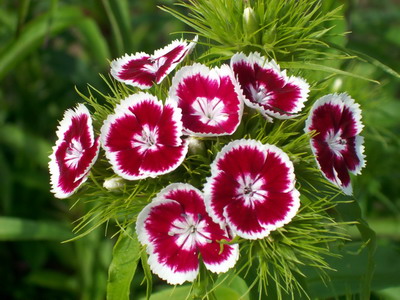
However, it reproduces well by self-seeding, and therefore you will be provided with magnificent inflorescences of this carnation every year, it is enough to plant it once in your area. This is one of the most elegant varieties of carnations, unpretentious and frost-resistant, it does not need to be covered with anything for the winter. She loves sunny color and “green” fertilizer, it would be nice to occasionally add some compost to her. When growing perennial flowers, Turkish carnation, sow seedlings early, at the end of February, plant in the ground at the beginning of May.
Perennial flowers for the garden irises (with photo)
It is difficult to imagine a garden without this elegant flower. Perennial flowers for the garden, irises are beautiful not only in the flower garden, they are also indispensable for decorating reservoirs, recreation areas, and are suitable for making mono-flowers. It reproduces simply: by dividing the rhizome, it is better to do this in early spring.
Irises are different: some of them like open sunny areas, others prefer partial shade and humidity, such as Siberian irises.
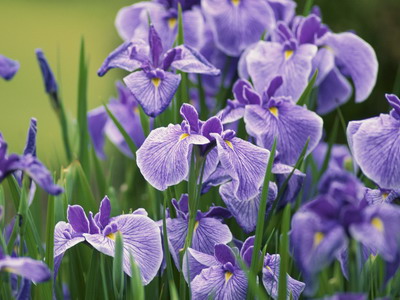
The description of perennial flowers of irises is very diverse: there are all sizes and shades, there are also miniature bulbous irises.

Look at the photo of these perennial flowers for the garden – irises are simply indispensable for alpine slides.
Irises are unpretentious, but they need sufficient watering and periodic “grounding”, as their rhizomes often become exposed over time. It is better not to prune them for the winter, leave it until spring, so they endure harsh winters better.
Growing perennial peonies
Unlike the tree peony, the herbaceous peony is a plant “for dummies”.

Growing these perennials is so easy that even a beginner grower can handle it. If you plant its rhizome in early spring or late August, it will delight you with flowering the next year. The only pity is that the period of its flowering does not last long! Peony loves abundant watering, top dressing – only mineral, he does not tolerate organic matter well. He definitely needs good drainage – add sand to the soil when planting.
Description and photo of perennial flowers of dahlias
Dahlias are also perennials. Simply, if dahlias are not dug up for the winter, they are annuals in our climate.
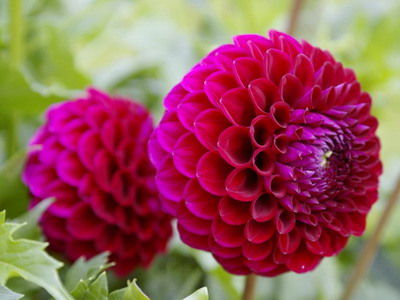
Well, if you provide them with the right wintering, then they will delight you for many years. This is truly a “royal flower”! All this flower is good. Judge for yourself: with proper planting, it begins to bloom before peonies, and blooms until frost, looks simply luxurious, is almost not affected by pests and almost does not get sick. He needs loose, well-fertilized soil and a sunny place: in partial shade, he blooms later and blooms less luxuriantly. As a rule, there are so many inflorescences that each bush seems to be completely covered with them. Do not forget to cut off faded ones in time.

As can be seen above in the photo and the description of these perennial flowers, dahlias are perhaps the champions in the number of colors. There are flowers in black, purple, striped, speckled, bicolor, pink, orange, yellow, crimson – and many other shades.
Quite in vain, the dahlia is considered “difficult”, the whole difficulty actually lies in planting it and in the fact that in the fall the dahlia root tubers must be dug up and then stored in the basement or in the refrigerator. What about landing? The fact is that if you want your dahlias to bloom really earlier than peonies, and not in August, they must be grown at home. Tubers for growing are planted in early April. To do this, you can use buckets, basins and other similar containers. Watering at this time should be moderate. It should be planted in open ground only after May 15, dahlias do not tolerate frosts. In autumn, dahlias are dug up within a few days of the first frost.
Beautiful perennial flowers for the chamomile garden
Chamomile is a truly “folk” flower, a win-win decoration for any flower bed. These beautiful perennial flowers for the garden are long-blooming and long-lasting cut flowers.
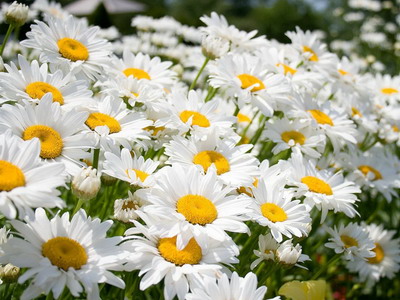
Garden chamomile propagates by dividing rhizomes, but you can start it with your seedlings by sowing seeds in cups at the end of February. It is better to plant chamomile in the ground at the end of summer. Watering and fertilizing are common. It should be noted that chamomile can be transplanted quite easily throughout the season, you just need to shade it during transplantation for 2-3 days.
In addition to leucanthemum – the well-known white chamomile – there are also colored “daisies” – pyrethrums, their flowers are smaller, but they are bright.

The most popular primrose perennials
Primroses are the most popular perennials for decorating rock gardens and ponds.

It can also be grown from seeds, or you can purchase ready-made seedlings. This is an unpretentious perennial that does not require much labor from you, and it blooms in early spring, when there are still so few colors on the site. It is not necessary to cover the primrose for the winter, the only thing you need to monitor is the cleanliness of the soil from weeds, they can oppress this plant.
Perennial flowers rudbeckia and echinacea
Rudbeckia and echinacea are similar even in appearance, they are tall, spectacular, bright. They will help to make an ensemble in any flower garden, they will give it structure and decorate the background, and their inflorescences are in harmony with any other “landscape forms” in your flower bed.

And in terms of agricultural technology, perennial flowers of rudbeckia and echinacea also have much in common. It is best to get your seedlings by sowing seeds at the end of February in pots. They have no problems with germination, you will definitely get good seedlings, and it will also successfully take root in a permanent place. It can be planted in the ground either in spring or summer, at first carefully weed out the weeds and water abundantly. Soil doesn’t matter. You can fertilize with both mineral fertilizers and organic matter, but you don’t need to do it too often. These plants winter well, and in the spring they “start” early.
Perennial hosta, astilba, daylilies, dicentra
Why are all these plants put together? Hostas , astilbes, daylilies and dicentras have a wonderful general quality: they are all great for decorating shady corners: they bloom in the shade. There are very few colors that can do this. All these plants are best planted by rhizomes, from seeds it will be less successful. Their planting material is easy to get – it is always on sale. Their care is also similar: watering, sometimes top dressing, is best with mineral fertilizers during flowering, and in spring with organic matter, and timely removal of faded inflorescences. Any soil is suitable for them.
Hosta is a plant with the most decorative leaves, which are green, and blue, and variegated, and with a white border, and yellow. Yes, and the size of the leaves can be anything: there are hostas – dwarfs especially for alpine slides, but there are just giants.

Hosta grows in any soil and under any conditions, but is best in the shade. Although this plant is mainly ornamental-deciduous, it also blooms with beautiful lilac “bells” on long peduncles.
Astilba, daylilies and dicentra can also be called decorative leafy: they also have “characteristic” leaves, and each plant has its own leaf shape. But the main thing is their flowering.
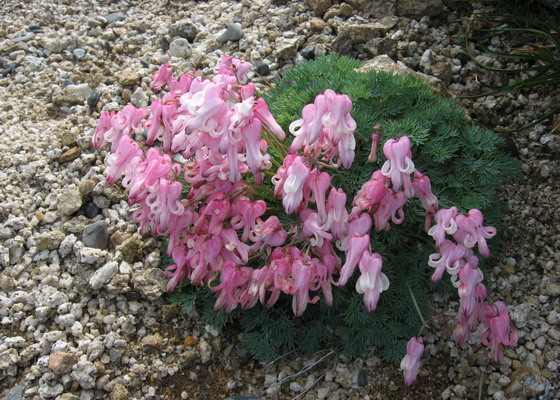
As you can see in the photo, these perennial flowers for the garden bloom very beautifully and, moreover, differ in a variety of colors.
Astilba is red, pink and white, the same shades are found in dicentra, daylily is orange, yellow and red. Dicentra pleases us with flowering in spring and early summer, and astilba and daylily – in the second. Over time, you will even have to limit the distribution of these unpretentious, lush perennials.
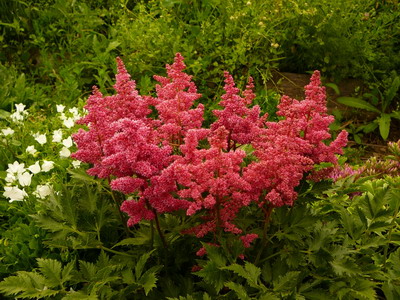
perennial lupine flower
Figuratively speaking, the perennial lupine flower is a perennial weed, so it is adapted to life in any conditions. Lupine seeds germinate even in the cracks between the slabs of the stone path! But at the same time, he’s so cute!
Lupins have a great variety of colors, especially colorful lupins are beautiful.

Plus, this flower is tall, and it has decorative carved leaves, so lupins can be safely planted “solo”, in separate curtains – and these will be noticeable accents of the site.
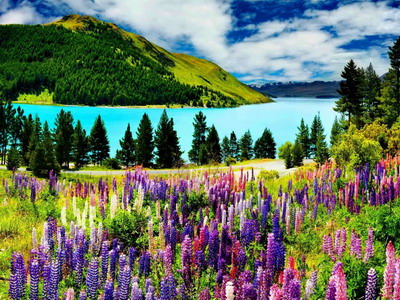
Well, in a flower garden, of course, it is indispensable – the shape of its inflorescences will remarkably complement the structure of the flower “filling” of any flower bed.

Lupine reproduces well by seeds, so you can easily grow its seedlings, just plant the seeds early, but if you plant its rhizome, then you are guaranteed to bloom in the same year. The soil does not matter to him, care is minimal. Lupine loves the sun, so you should not plant it in the shade. If you cut off the faded “candles” of lupine, it will bloom again. By the way, you can collect lupine stems with pods – this is a wonderful dried flower.
Popular perennials for the garden “golden balls”
This perennial flower is familiar to everyone! It is just one of those plants that “grow themselves.”
“Golden Balls” is a popular name. In fact, the flower is called rudbeckia dissected. At its core, the popular perennials for the garden “golden balls” are malicious weeds, they grow everywhere, always and even with complete absence of care. They need to be monitored so that they do not fill the entire area.
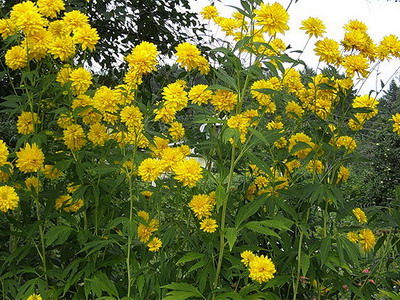
The lack of moisture can affect the size of the flowers – they will become smaller. If you add rudbeckia of dissected humus and sometimes water it abundantly, you can admire large – up to 10 cm in diameter, golden flowers. Reproduction – rhizomes and shoots.
perennial asters
Perennial asters are attractive and trouble-free flowers, guaranteed to brighten the garden from spring to frost. That’s right, because this group includes not only autumn asters familiar to everyone.
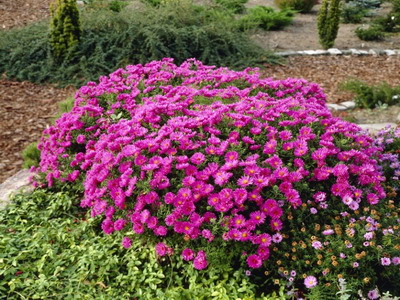
Perennial asters have many types:
In late spring and early summer, alpine aster blooms, this flower is low, 25-30 cm.

Italian aster blooms all summer, this plant is of medium height, 40-60 cm. Well, at the end of summer, New England and New Belgian asters begin to bloom, and they bloom until frost (until November).

In the same period, heather aster also blooms, it is you who most likely saw it, it is the most common in our gardens. It blooms with lilac flowers.
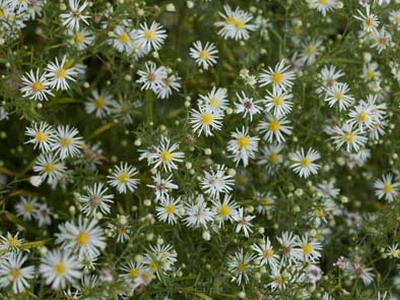

Look at the photo of these perennial garden flowers: asters come in a wide range of colors. They are white, yellow, blue, pink, red, lilac, purple.
Perennial asters prefer nutritious soil, organic matter, lime. Planting is better not to thicken, so that the plants are well ventilated. Tall asters need to be tied to supports. Asters need to be propagated every 3-4 years, when the bush begins to become bare from the inside. Plants need to be dug up, the roots divided and transplanted to a new place. This should be done either in August or early May.
Beautiful perennial phlox flowers
Phloxes are indispensable in an easy care garden, and indeed in a beautiful garden. There are many varieties of phlox, with flowers of different colors.
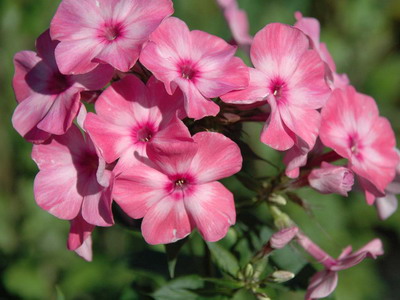
There are even phloxes – “chameleons” that change their color depending on the lighting, from crimson to lilac!
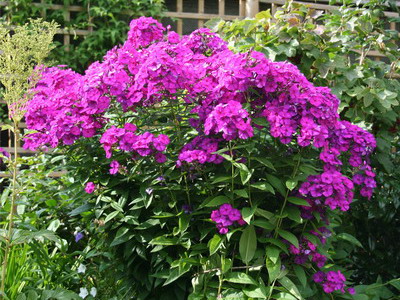
At the same time, the essence of plants has not changed – these perennials behave like weeds: they take root well and grow powerfully, sometimes crowding out other plants. Phloxes grow well both in the sun and in partial shade, and even partial shade is preferable for them. In general, without any care, phloxes can grow and bloom up to 8 years, but their flowers are gradually crushed. Therefore, they sometimes need to be fed with organic matter or any flower fertilizer and watered abundantly from time to time – then the flowers will be large, and the lower part of the stem will not be exposed. Once every 6 years, these beautiful perennial flowers need to be divided: dig and cut the rhizomes, and move them to a new place. You can even divide the bush with a shovel right on the spot – dig up the bush, chop off part of the root and move it to another place, and fill the hole with the rest of the root again. Planting phlox is best in early spring. But if you had to do it in the fall, you do not need to cut the stems with leaves.







